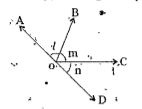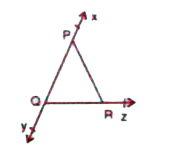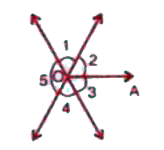Statement (I): From the adjacent, Figure. ∠(l), ∠(n) are adjacent angles.Statement (A): Adjacent angles are having a common arm.Statement (M): To form a linear-pair angles are need not to be adjacent angles. Solution in Telugu
Solution in Telugu
I, A, M is true
I & A are true but M is false
I is false, A is true but M is false
I, A, M are all false
Step by step video & image solution for Statement (I): From the adjacent, Figure. angle(l), angle(n) are adjacent angles.Statement (A): Adjacent angles are having a common arm.Statement (M): To form a linear-pair angles are need not to be adjacent angles. by Maths experts to help you in doubts & scoring excellent marks in Class 7 exams.
Updated on:21/07/2023Similar Questions
కిన ఇచ్చిన పటాములలో ఆసన్న కోణాల జతలను, ఆసన్న కోణములు కానీ జతలను గుర్తించి వ్రాయుము.

View SolutionIdentify and write pairs of adjacent angles and adjacent angles in the given diagrams.
View SolutionThe linear ducts always become adjacent angles. But a pair of adjacent angles does not have to be linear. Why?
View Solutionबगल की आकृति में एक आसन्न कोण युग्म का नाम लिखें।

View Solutionसंलग्न आकृति में निम्नलिखित कोण युग्मों के नाम दीजिए।

(i) आसन्न कोण
View SolutionStatement (L): The angles formed on both sides of a common arm and a common vertex are adjacent angles.Statement (M) : A pair of complementary angles forms 180^@ .Statement (N): A pair of complementary or supplementary angles need not be adjacent angles.
View SolutionName all pairs of Adjacent angles. In the figure. How many pairs of adjacent angles are formed? Why these angles are called adjacent angles?
View Solution
